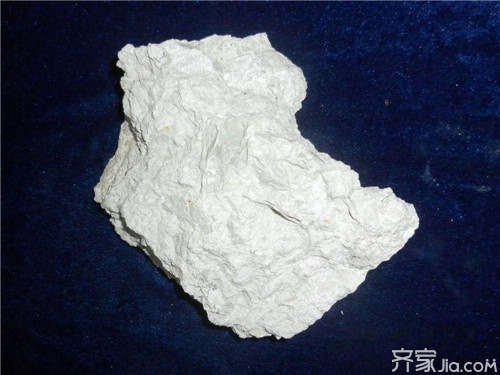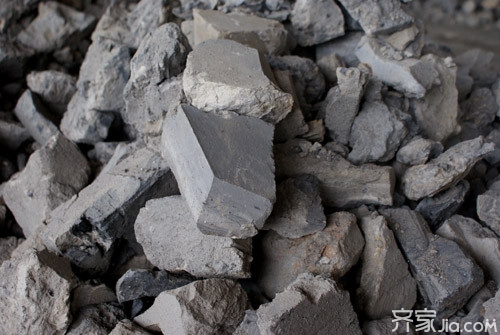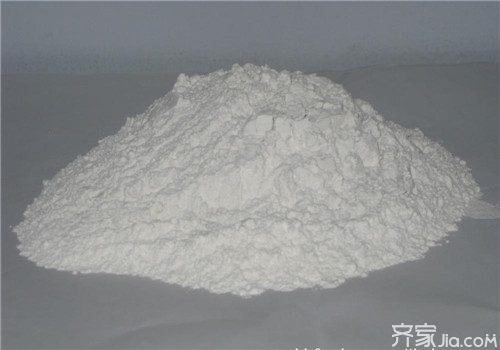Porcelain clay, also known as china clay, is the main raw material of ceramics. Porcelain clay is degenerated by mica and feldspar, in which sodium, potassium, calcium, iron, etc. are lost, and water changes. A pearl luster, the color was pure white or light gray, such as containing more impurities are yellow, brown and other colors. Most of them are in dense or loose clumps. Easy to disperse in water or other liquids with a creamy feel. How much is the price of that clay ? Take a look.

What is China clay
There are many kinds of clay, their composition and properties are different, and mineralogy has various names. However, potters are used to refer to the clay used for ceramics as "clay clay" and the clay used for making porcelain as "porcelain clay." The common feature of clay is that the flux content is particularly high and the firing temperature does not exceed 1000°C. The common features of porcelain stone, china clay, wood and clay soils and white clay soils are the low flux content and low iron content. They can be sintered into ceramics at temperatures above 1200°C, so they are all called porcelain clay. The above concept of clay and china clay is not strict, so there are many exceptions. For example, the white pottery of the Shang Dynasty and the tricolor pottery of the Tang Dynasty were all made of china clay. In addition, the flux content of Yixing Zisha Mud is as low as that of china clay. The firing properties are also different from that of ordinary clay. Because it is mainly used for making pottery, it is customarily called clay instead of clay.
The main components of china clay
Porcelain clay (also known as "kaolin") - china clay (H4Al2Si2O9) is the main raw material of ceramics. It is named after Gaoling near Jingdezhen, China, which is the world's first kiln factory. Later, the Chinese language of "Kao Ling" evolved into "Kaolin" and became an international term. Pure china clay is a white or off-white, silky glossy soft mineral.
Porcelain clay is degraded by mica and feldspar, in which sodium, potassium, calcium, iron, etc. are lost, and water is changed. This effect is called "porcelainization" or "kaolinization." As far as the origin of porcelainification is concerned, although there is still no conclusion in academic circles, it can be roughly assumed that feldspars are deteriorating due to the action of hot springs or gases containing carbonic acid gas and gas generated during the decay of marshland plants. In general, porcelain is prolific in the vicinity of hot springs or around limestone, which may be the reason. The melting point of porcelain clay is about 1780°C. In fact, because it contains some impurities, its melting point is slightly reduced.
There is not much stock of pure china clay (kaolin), and the so-called pure china clay also does not have the strong viscosity of clay. Generally referred to as porcelain clay, if placed under the microscope to observe, most of them with a white silk-like luster, shiny silver, is a very small crystal, which is the so-called pure china clay. In addition, it also contains undeformed feldspar, quartz, iron ore, and other rock fragments that are sources of china clay.

The nature and classification of china clay
Pure quality porcelain clay has high whiteness, soft and easy to disperse suspended in water, good plasticity and high adhesion, excellent electrical insulation properties. Has good resistance to acid-soluble, very low cation exchange capacity, high refractoriness and other physical and chemical properties. Naturally produced china clay ore, according to its quality, plasticity, and sand content, can be divided into three types of industry: hard china clay, soft china clay, and sandy china china.
The hard porcelain clay is hard, no plasticity, crushed, plastic after grinding; soft clay soil is soft, plasticity is generally strong, sandy content is less than 50%; sandy clay soil is soft, plasticity is generally weak, after sand removal Stronger, sand content greater than 50%.
Distribution of china clay
China is one of the countries with rich porcelain resources in the world. The total amount of China's clay resources may exceed 19 billion tons, ranking fourth in the world after the United States, the former Soviet Union, and the United Kingdom. The type of ore in China's china clay is dominated by sandy china clay, which accounts for more than 60% of the total reserves; the total reserves of soft china clay and hard china clay are about 6% and 5% respectively; other unclassified types of china clay account for the total reserves. About 27%. The resource conditions and industrial development degree of each country are different, and the application structure of china clay is also quite different. For example, more than 70% of China's porcelain clay is used in the ceramic industry, and the proportion of porcelain clay used in the paper industry is very small. More than 50% of China's porcelain in the United States, Britain, and Japan is used in the paper industry.
The use of china clay
1, clay plasticity, adhesion, a certain degree of drying strength, sinterability and whiteness after burning and other special properties, making it the main raw material for ceramic production, for the production of ceramics for daily use, construction and sanitary ceramics, porcelain, chemical industry Corrosion-resistant ceramics, arts and crafts ceramics and special ceramics.
2. Excellent process properties such as whiteness, softness, high degree of dispersion, adsorption and chemical resistance make it widely used in the paper industry. Used for paper fillers and coatings to increase paper density, whiteness, and smoothness, improve printing performance, and reduce papermaking costs.
3. The pure porcelain clay with a refractoriness higher than or equal to 1770°C can be used for making enamel and laboratory enamels for smelting optical glass and glass fibers. The low-grade porcelain clay can be used for making firebrick, enamel, fire-proof mud, iron mud plug and burning. White cement and so on.
As a reinforcing agent and filler, it can improve the mechanical strength and acid resistance of rubber, improve product performance, and reduce costs.
4. To make high-efficiency adsorbent instead of artificially synthesized molecular sieve for chemical cracking. As a coating for pharmaceuticals, absorbent layers, additives, bleaches, fillers for the manufacture of detergents, cosmetics, pencils, pigments, and paints. Used as a carrier for chemical fertilizers, pesticides, and insecticides.
5. Porcelain with low iron content is used in the glass fiber manufacturing industry. Its main role is to provide a source of aluminum and silicon, as well as to make it bleak. The decorative sheet made of glass-ceramics with porcelain as the main raw material and wollastonite as the main crystal phase adopts a melt crystallization molding process. The method is low in cost, and the product has good color, pattern, and appearance. The surface has a natural stone pattern and a colorful tone pattern.
6. After the porcelain clay is dehydrated, it turns into a typical porcelain clay with high pozzolan activity. The earth-activated cement prepared by the alkali-activated clay is directly used as a concrete mineral admixture to improve the workability, strength and durability of the concrete. At the same time, the common self-shrinkage phenomenon of the high-performance concrete is also better. The inhibitory effect. In terms of advanced technologies for defense, nuclear reactors, jet aircraft, rocket fuel chambers, and nozzles all require high-quality china clay.

How much is china clay
China clay price
Zhenling Minerals supply kaolin bentonite china clay reference price: 2,000 yuan.
Supply ceramic clay clay clay ceramic kaolin reference price: 500 yuan.
Factory direct clay porcelain clay washed kaolin ceramic raw materials high territorial rubber clay reference price: 1500 yuan.
Supply kaolin / white clay / yellow clay / white clay soil reference price: 450 yuan.
Supply ceramic white clay, white clay soil reference price: 490 yuan.
Supply ultra-fine porcelain clay complete performance and excellent performance Price: 3800 yuan.
Note: The above prices are for reference only.
Summary: The above is related to information on how much money a ton of clay is for reference. I hope it will help everyone. If you want to know more related information, you can pay attention to this website information.
How much is a led lamp? How much money depends on Feng Shui?
Wood Powder Activated Carbon,Wood Based Powder Activated Carbon,Shell Wood Powder Activated Carbon,High Quality Wood Powder Activated Carbon
Ningxia Jinyihui Environmental Protection Technology Co., Ltd. , https://www.chinajyhhb.com